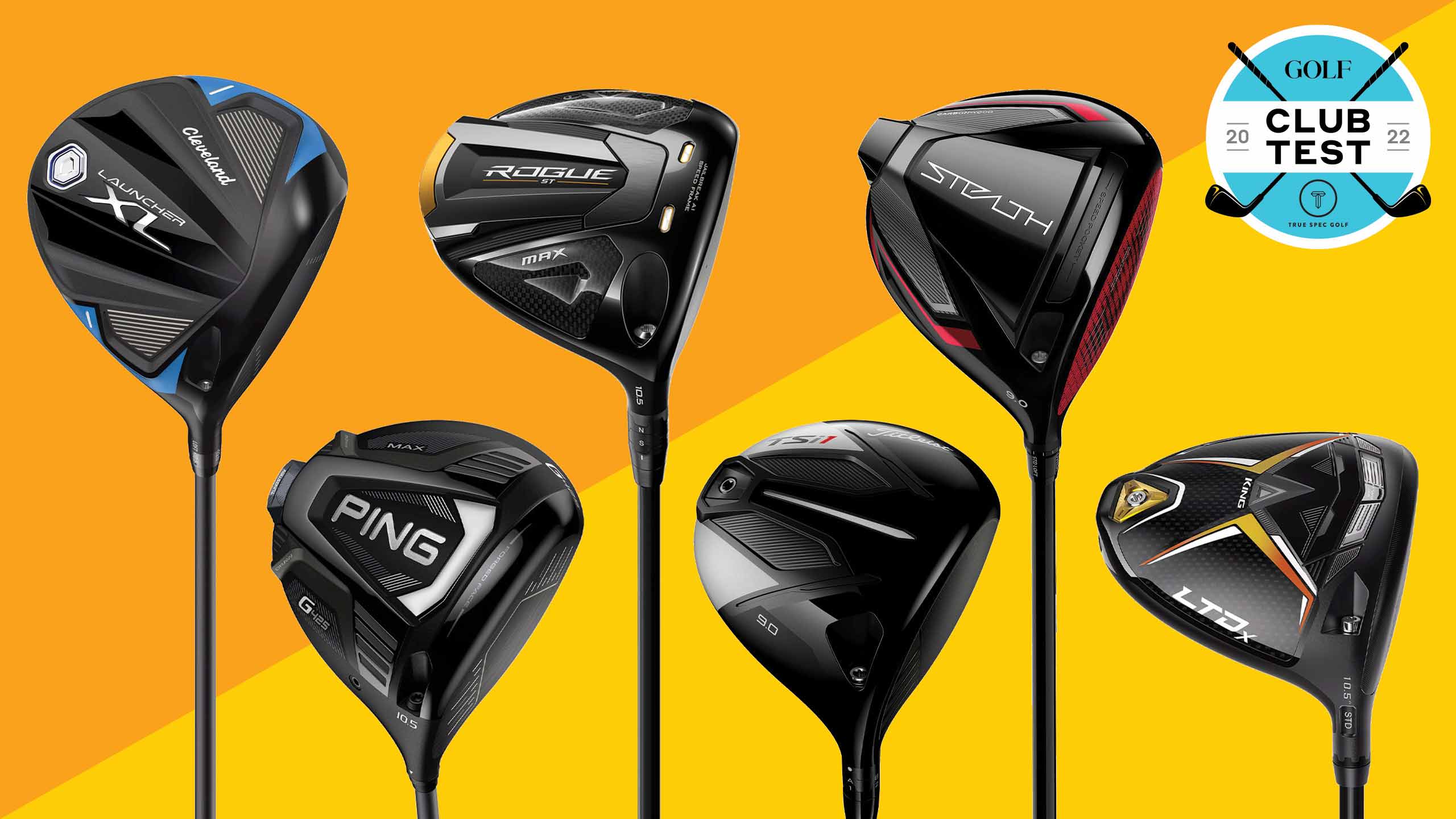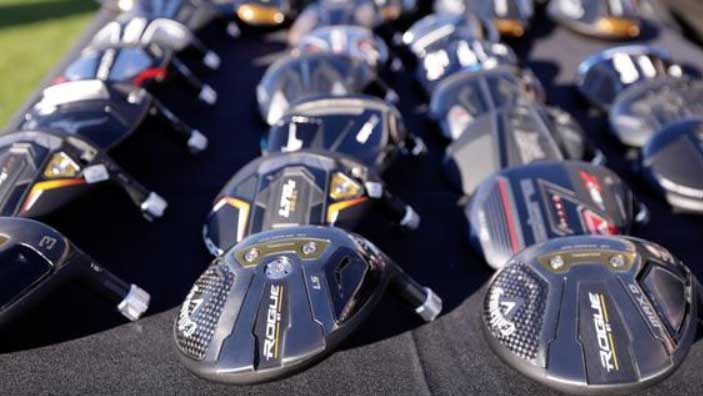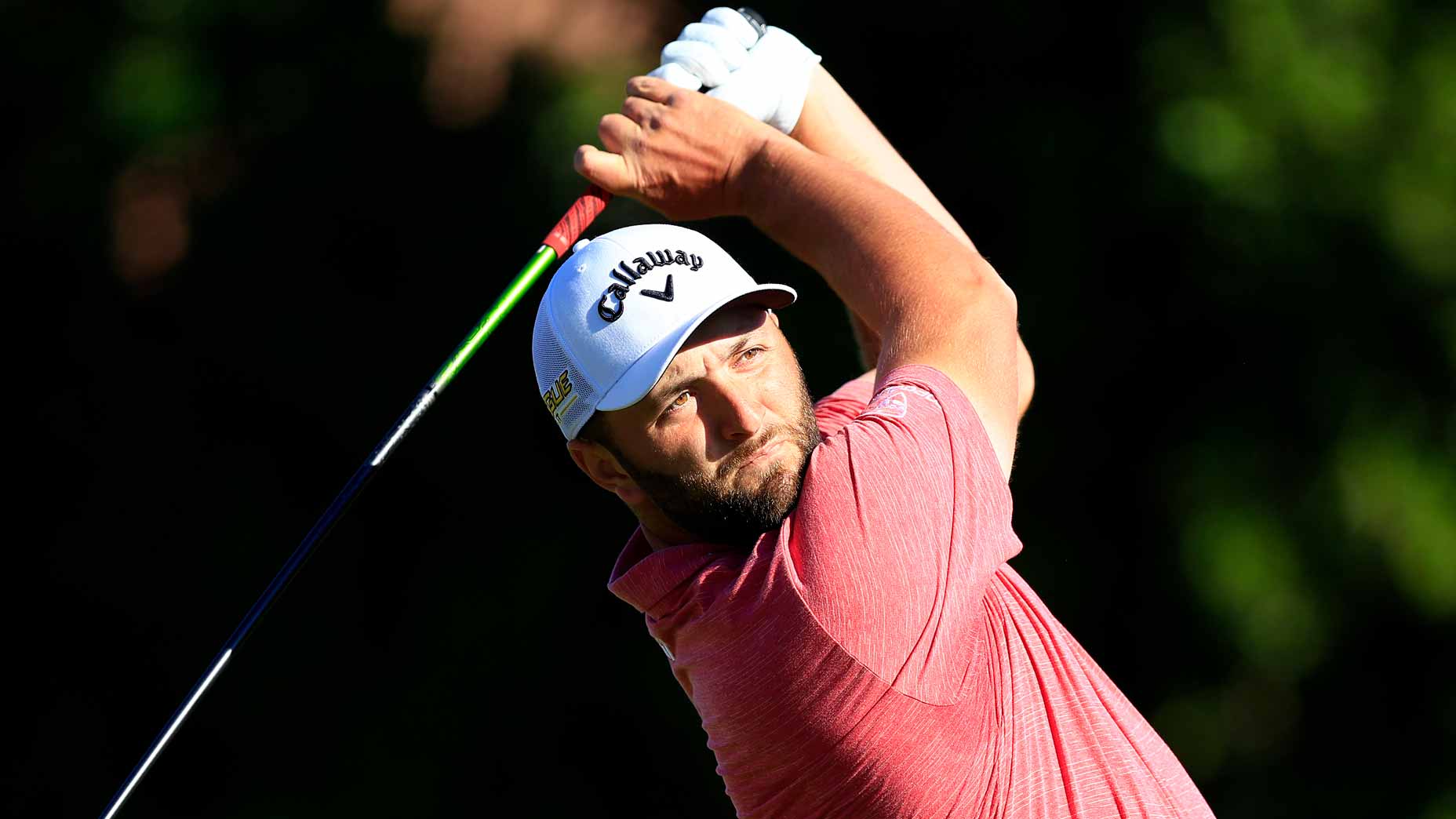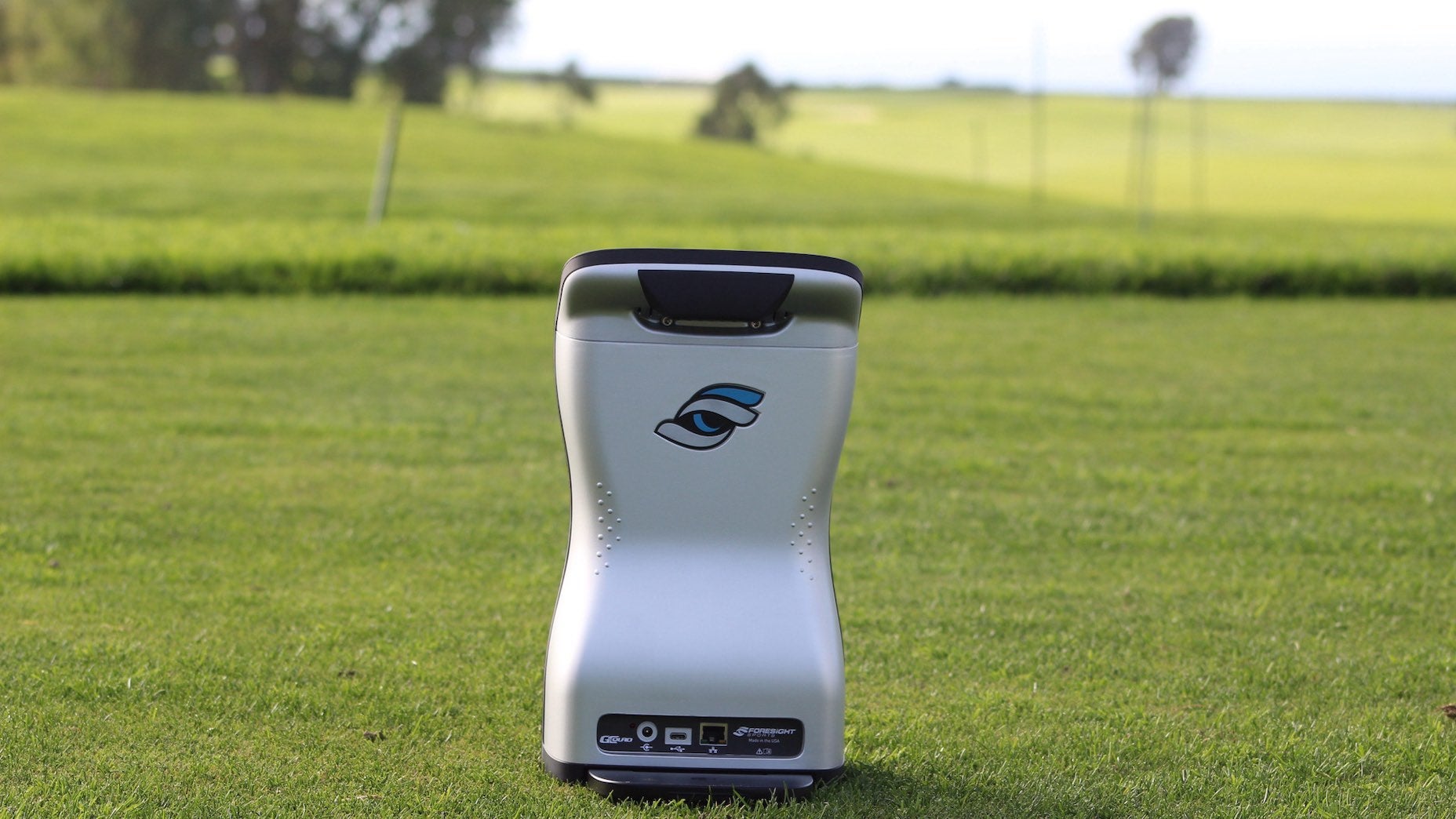
Foresight’s GCQuad is one of the most technologically-advanced units in the marketplace and has continued to grow in usage on Tour.
Foresight
The inclusion of robot testing for 2022 ClubTest is something we’ve been trumpeting at GOLF.com since Golf Laboratories founder Gene Parente came on board. In our eyes, having the ability to cut through the noise and offer an unbiased opinion on how a driver performs from nine different strike locations allows golfers to make better decisions when it comes to the driver models they choose to test during a fitting.
It’s our goal to make you smarter about your gear — and that ultimately begins with providing insights that aren’t readily available in the industry.
To help bring those insights to life, we not only partnered with Golf Laboratories but Foresight Sports as well for robot and player testing. Utilizing the company’s GCQuad launch monitor made it possible to capture data on all of the clubs that went through the testing process.
If you’re unfamiliar with Foresight’s GCQuad, it’s one of the most technologically-advanced units in the marketplace and has continued to grow in usage — Foresight became the most-used launch monitor on the PGA Tour at the 2021 Palmetto Championship — over the last few years in the professional ranks. (Foresight’s Tour usage is up 600 percent in the last year.)
“I’d attribute our rise in popularity and success on tour to convenience and accuracy,” said Mark Gerent, Foresight Golf’s PGA Tour rep. “Guys can take it from the range to the course and immediately see their data right in front of them. It’s extremely accurate and they trust it. Not to mention they don’t have to worry about the numbers being off.
“For instance, going from Pebble Beach to TPC Scottsdale, there’s a shift in air density and elevation that the GCQuad’s built-in barometer accounts for. It’s in its own normalized weather bubble. We take away all of the variables — wind, slope and just offer a pure distance number of what the player is doing in that timeframe with the weather. There’s no side static that will affect their ball flight.”
If you’re unfamiliar with GCQuad, the unit is built around four high-speed photometric cameras situated inside the housing that capture accuracy at 10,000 frames per second — without the need for club markers.
Tiny sensors regulate the flash feature on each camera, which controls the amount of light allowed into the lens for each image. The slower you swing, the more light each camera must produce in order for the machine’s onboard computer to collect information. Four markers can also be added to the clubface to measure movement, tilt, rotation and a number of other important swing attributes as the club moves through impact.
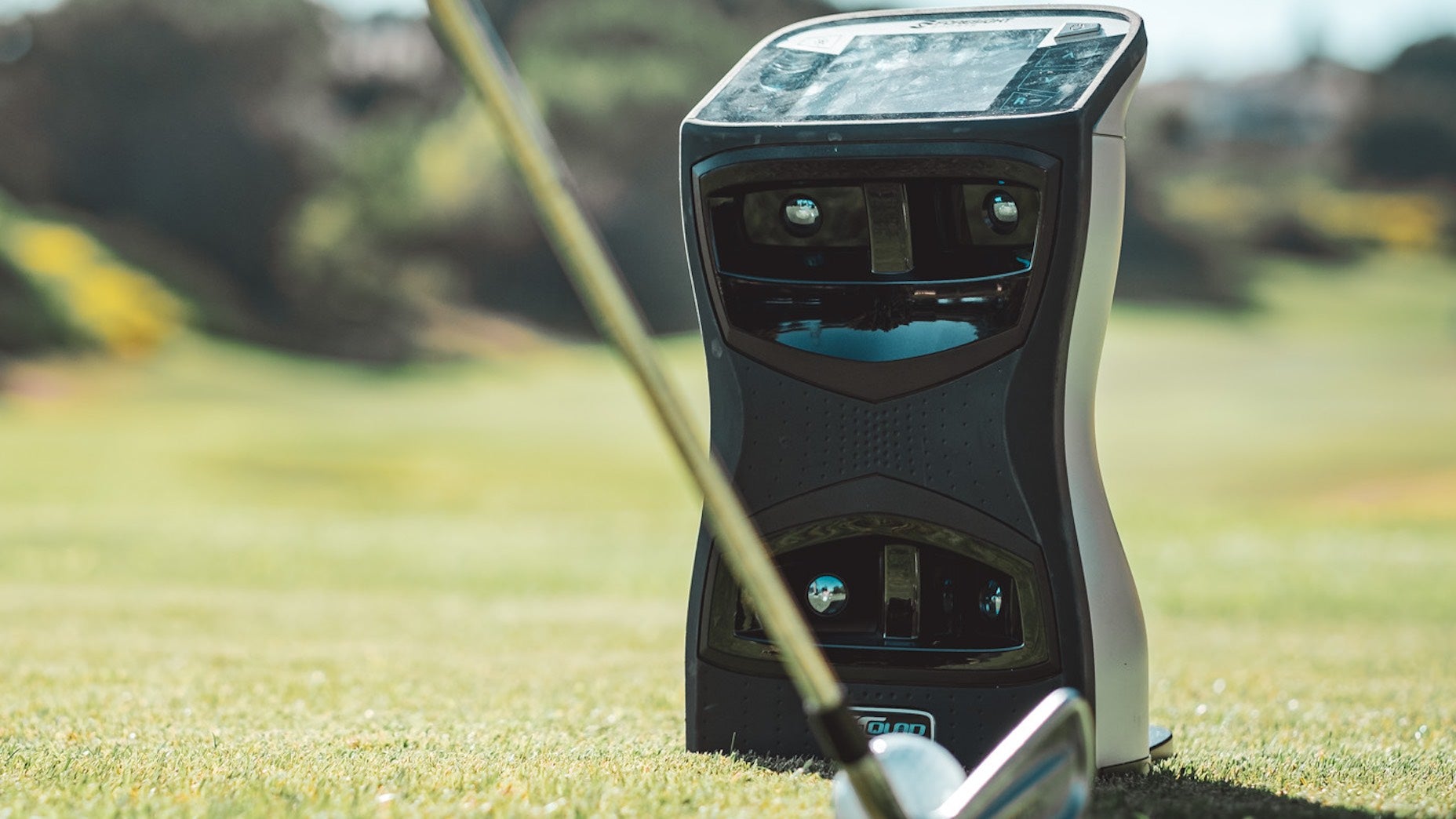
unit is built around four high-speed photometric cameras situated inside the housing that capture accuracy at 10,000 frames per second
Foresight
Swing data is then parsed by a series of high-powered processors, translating the captured images into numbers the computer analyzes in a matter of milliseconds, which are then displayed on the screen. The unit’s ease of use also makes it possible to take it on the course, set it down and gather real-time data within a matter of seconds.
Below are 5 additional reasons why Foresight’s GCQuad stands out from its competitors.
1. Eliminating variables
It’s important to reduce as many variables as possible during robot testing to gain an accurate understanding of what a club is capable of doing. With GCQuad, the unit is designed to cut through the noise and deliver accurate data, particularly when it comes to characterizing club orientation at impact, as well as vector.
“If you’re going to the effort of using robotics, the reason you’re doing that is to eliminate variables,” said Tim Briand, Foresight’s director of business development. “You’re also doing it to produce a specific delivery condition as far as clubface, strike location, alignment and path. So wherever that face is pointed or direction it’s moving, no one can measure impact location, face angle and all three axes like we can. It’s really important to know the data you’re getting from the robot captures that the robot is actually delivering the club the way that we intend it to be delivered to produce these test results. If you’re running a 9-point test, how do you know if you’re actually hitting it 1 centimeter high and 1 centimeter out on the toe if you’re using other technology? For them, it’s guesstimates or estimates for impact location. We’re actually capturing it.
“When you look at where the ball strikes on the face and the effective gear effect over the outcome of the shot and compare it to our competitors, they’re calculating spin axis in most environments, and that’s based off face-to-path differential. That doesn’t consider strike point. You can have an open face to the path, but if you ding that thing way off the toe, it’s still going to hook.”
2. Actionable data
Actionable data is defined as information that can guide decisions. When it comes to GOLF’s 2022 ClubTest, the robotic driver insights compiled by the GCQuad can be used to highlight particular areas where a specific model might excel. For example, Cobra’s LTDx driver produced nearly identical carry numbers when comparing the center strike location to the toe area. Based on these insights, a golfer who tends to catch the ball off the toe might want to consider this driver during their own testing.
“In the case of someone who uses a launch monitor for general understandings, actionable is something different than something that’s used for research or characterization for analysis,” said Rick Cuellar, Foresight’s director of sales. “So doing comparative analysis, those are different things. We have the most actionable data for comparative analysis, whether it’s golf club, golf ball — the launch conditions and the downrange data — so those three metrics we measure, and we measure to the highest level in the industry.”
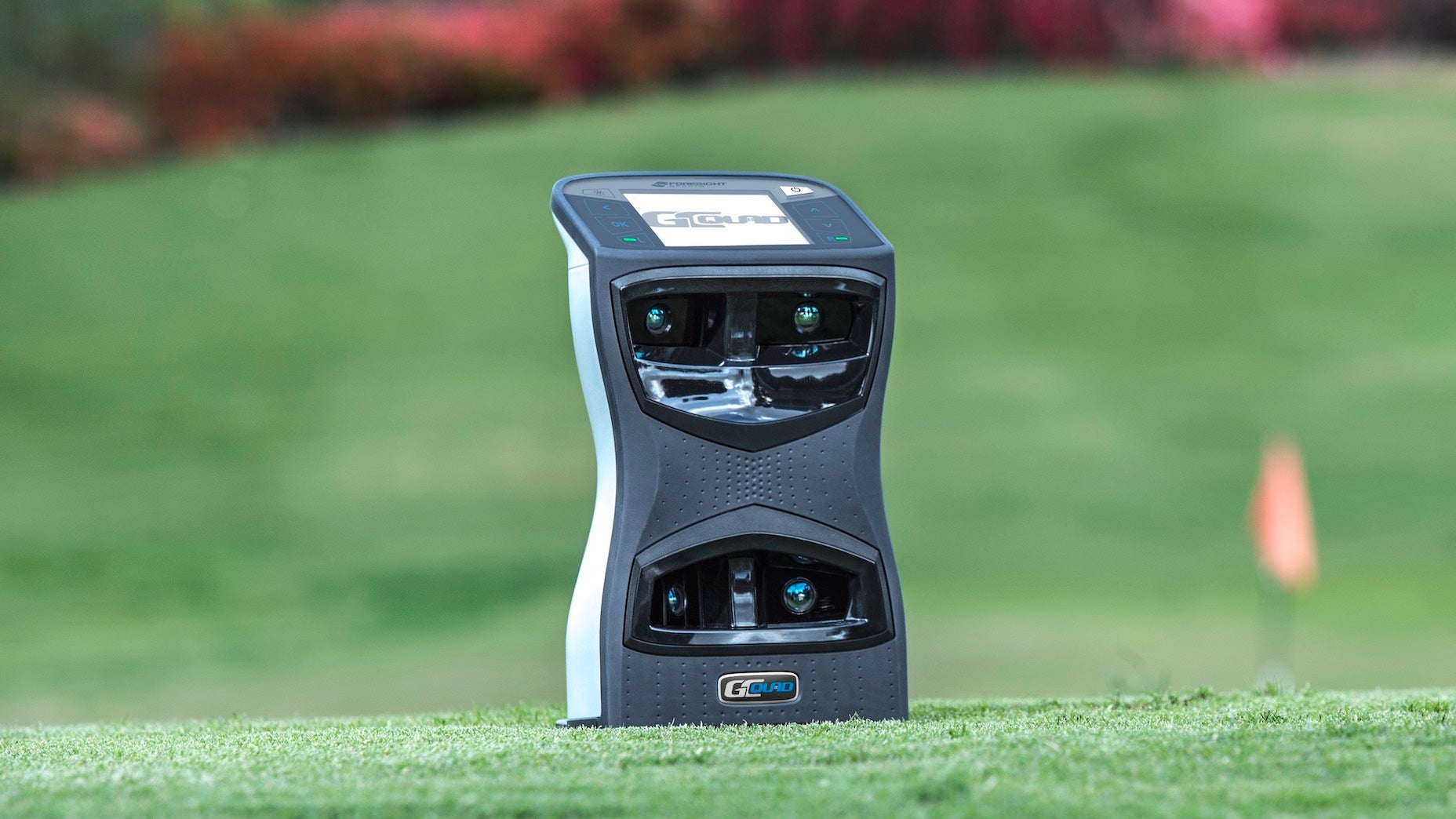
Tiny sensors regulate the flash feature on each camera, which controls the amount of light allowed into the lens for each image.
Foresight
3. Capture rate
When you’re hitting thousands of balls during testing, the last thing you want to do is question whether a shot was legitimate or a “bad read.” The high-speed photometric cameras and sensors on the GCQuad ensure the capture rate is nearly perfect from one shot to the next.
“When you look at the capture rate of the golf ball’s launch conditions compared to some of our competitors, their unit might miss one or two out of 10 shots,” Cuellar said. “Maybe spin isn’t there, while ours is 99.99 percent captured. It rarely if ever misses capturing the ball’s launch conditions. Not to mention the capture system doesn’t change indoors or outdoors.”
4. Measuring spin
Depending on the launch monitor, spin can be calculated in a number of different ways. When it comes to the GCQuad, the spin measured on each shot is used to determine not only accurate carry yardage but curvature. In other words, the unit is able to accurately tell you how far the ball is going in the air and the direction it’s traveling — without a bunch of guesswork.
“No one can measure spin like we can — both accurately, as far as the magnitude of spin,” said Briand. “Our competitors are adding things to their technology platforms to help them with spin magnitude, but the next, and probably most important, is spin axis, which determines curvature. We measure the spin, not calculate it or derive it from other parameters — and we don’t have to add any stickers or special golf balls.
“The fact we can do it as accurately and precisely as we can do it, there’s a huge difference why you’d want to use a Quad for ClubTest than anything else. What if you were hitting balls into a net and you were doing a 9-point face mapping test using a doppler unit? It’s not factoring in gear effect and just using face-to-path. You’re going to get skewed data.”
5. Characterizing wind
No one can control the wind during a testing session, which can sometimes lead to some interesting carry numbers. What makes GCQuad so unique is its ability to remove wind conditions from the equation and offer a pure carry number, thanks to a highly technical algorithm that’s unlike anything in the industry.
“When a player’s trying to strike the ball to characterize his carry distance, he’s really doing comparative analysis to characterize with each one of his clubs what that real carry is,” Cuellar said. “The best way to do that is in a vacuum by eliminating the wind. Some people wonder why you wouldn’t want to characterize the wind — well the wind is turbulent, not linear, so because it’s turbulent, we have to estimate even if we’ve spent months and months characterizing the impact of wind in a certain environment.
“We don’t know what it is across the altitude, change of the peak height of the ball, or downrange how far the golf ball flies, so it’s always going to be our best estimate, regardless of how much research we do to characterize it. In that sense, that’s why it’s better to use our technology, which takes the most accurate data and plugs it into an algorithm. From there, it tells you how far the golf ball carried because then you’ve isolated the player’s variability and ball striking, producing a launch condition.”
Want to overhaul your bag for 2022? Find a fitting location near you at GOLF’s affiliate company True Spec Golf. For more on the latest gear news and information, check out our latest Fully Equipped podcast below.


